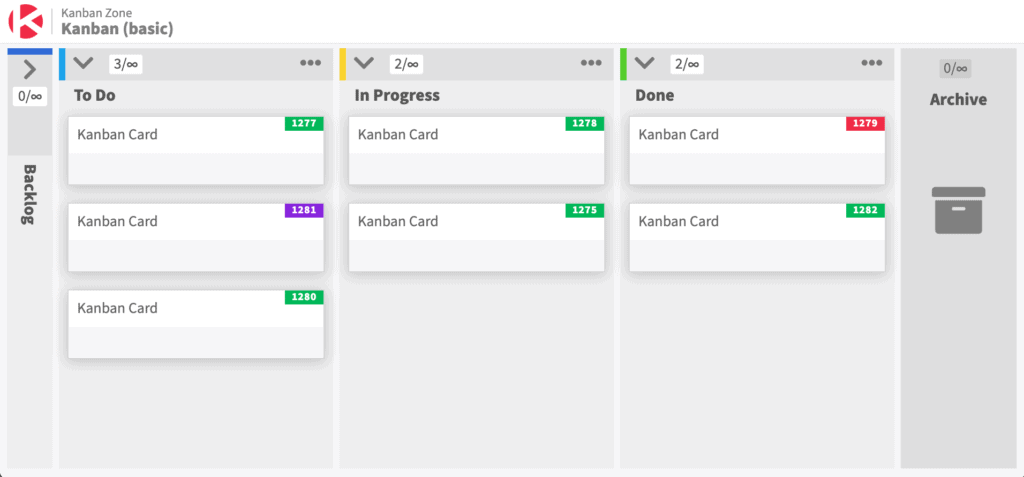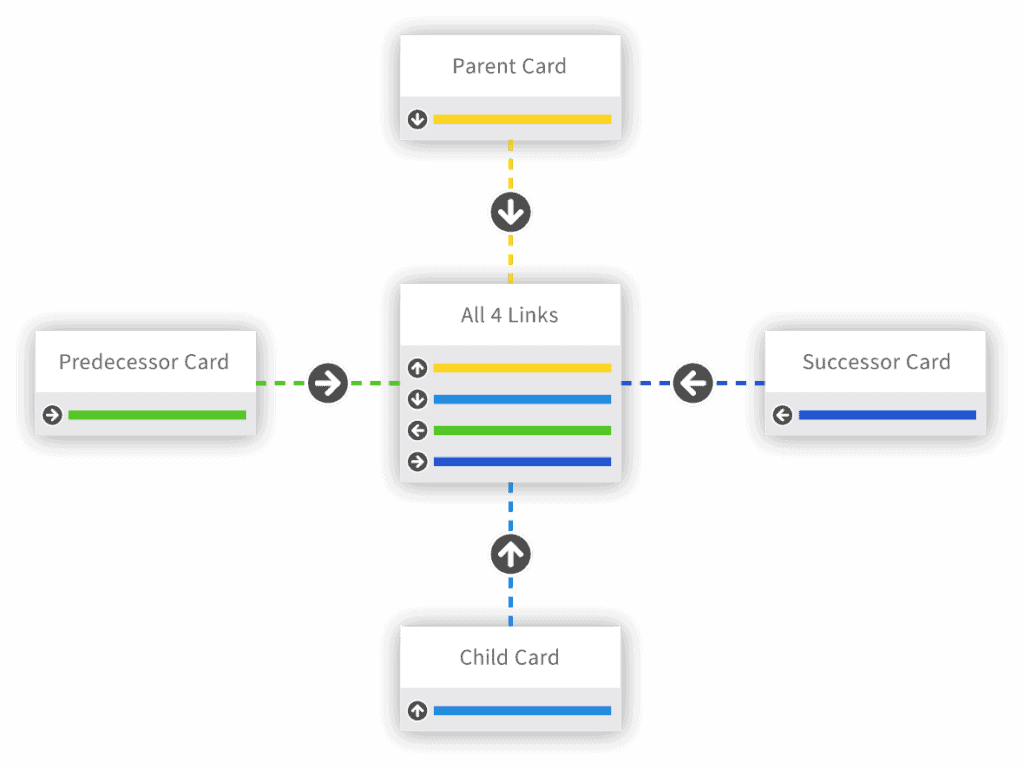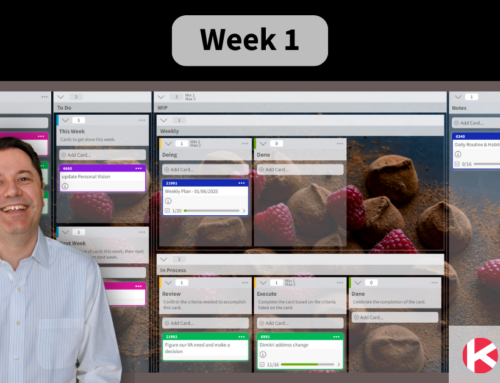
For years now, those in the corporate world have used Kanban systems to streamline their work and maximize the teams’ performances. While this system has been predominantly used in IT departments, it now has widespread use in the world of sales, marketing, and finances.
The initial idea behind the method was to improve product development workflows and IT projects. However, there are many ways to use it to boost other fields in your company.
What can you achieve with it?
Seventy-five percent of employees today believe that collaboration is highly important, and 86% blame the lack of it as a top reason for workplace failures. If used properly, Kanban can ensure proper workflow in an organization. It can help you track everyone’s work and boost collaboration in your team.
These benefits and the ones we’ll discuss below contribute to success in every department, especially in sales, marketing, and finances. In this article, you’ll learn about the Kanban flow patterns and how they can help you.
What is Kanban?
Kanban is a system, a method created to help you manage your work. It helps businesses manage all kinds of professional services i.e. knowledge work. By using this method, you’d be applying somewhat of a holistic way of organizing your services.
Simply put, the Kanban method will help you visualize invisible knowledge work and see how it moves through your company’s workflow. This can be of high value for departments such as finance, sales, and marketing because it shows you 2 key pieces of information at all times:
- How your team works
- How you can offer better services to the customers

Kanban is simpler to use now than ever. You don’t have to do anything manually. By using a Kanban system, you can promote better collaboration in your team, manage them more efficiently, and achieve continuous process improvement.
Continuous process improvement is constant work that boosts the performance of the existing processes in your company. This means that you can work to improve the processes in your departments to achieve better results.
Applying Kanban flow patterns to sales, marketing, and finances
You might not realize this yet, but there are many connections between the Kanban system and these 3 fields. Below we’ll examine the flow patterns that can help you with your processes, as well as the actions you can take on your Kanban board.
1. Visualization
Businesses are in a constant rush and yet, they have so much to juggle all the time. This is why we use diagrams, presentations, endless lists, and all sorts of organizational tricks to keep track of everything. If we don’t do this, we are faced with the following problems – and more:
- Missed deadlines
- Misunderstandings between employees
- Inconsistent marketing strategy
- Poor sales service
- Costly financing errors
Well, Kanban’s flow patterns are perfect for visualization and they can help you avoid all these.
For instance, you can find a ‘Ready’ column in a Kanban board, which shows you that your sales or marketing team has completed a task. If your sales team completed their work, it’s time for the delivery team to take over.
In Kanban, you can also set minimum and maximum limits for works in progress. This will help you make sure that everyone in the team has a task, and no one is overwhelmed.
One great thing about visualization in Kanban is the transparency it offers. Everyone who has access to the board can see what’s pending, what opportunities are available, and what’s completed.
Employees can see the tasks that are pending. Managers and leaders can gain continuous insights into how the project is progressing.
Visualization in Kanban for better financial decisions
In addition to visualizing the tasks, the Kanban system can also be used to organize your business investments, payments, etc. For instance, many companies today juggle different forms of payment, including cryptocurrency.
Kanban can help you prioritize your financial processes. For starters, you can prioritize learning how cryptocurrency works and find the best place to buy and trade it. Next, if you plan to pay your team in crypto, which is common these days, you can use the board to ensure that you follow all the steps necessary – and avoid any delays that might occur.
2. Flow management
Some of the top metrics Kanban offers include:
- Lead time – the latency between the moment when a task is initiated until the moment it’s completed
- Cycle time – how much it takes to process a job (for instance, how long it takes for your support to solve a customer’s query, or your finance team to calculate salaries)
- Work in progress (also goods in process, in-process inventory, etc.) – these metrics refer to the finished goods that wait for completion (for instance, your marketing content for social channels)
- Efficiency – measures of how much material, energy, money, effort, and time you’re spending on each task
- Cumulative flow diagram – a graph that shows you the quantity of work over time in a given state
- Queues – tasks and projects that are still awaiting completion
In sales, you probably have different types of items on the market. In marketing, you are probably trying to promote your brand across various platforms. Every different point can be assigned to a specified workflow that it will travel through.
Thanks to metrics like the ones above and the famous Kanban flow, you can keep track of everything. You can learn if the project is going as planned or needs more time. You can make sure everyone does their work on schedule.
For instance, the cumulative flow diagram will show you how stable your workflow is. You can use this information to anticipate any bottlenecks and make the processes more efficient.
By graphing who is assigned a task, how they are completed over time, and their overall distribution, Kanban flow patterns will help you visualize massive amounts of data to make better decisions.
3. Smarter hierarchy
If you use Kanban, a daily workboard is a great way to manage sales, marketing, and finances. It can track individual breakdowns of each campaign. Not only that, but it will break down the big task into smaller tasks and keep them linked together to show you their connection.
For instance, if your marketing team is building a landing page, the workboard will show small tasks related to its creation such as design, content, CTAs, etc.
This can be simplified thanks to features like ‘requested’ or ‘assigned’, ‘in progress’, ‘done’, and so on. But, it can also be more detailed depending on your company’s needs. For instance, you can use a system like this:
- Ready to start – tasks of the highest priority
- In progress – tasks that are already being worked on
- Under review – tasks that are complete, but still need to be reviewed
- Done – task is completed and ready for the next stage
Very often, in Kanban, businesses create links between different cards or tasks to show child, parent, predecessor, successor, and relative relationships.

How are these used?
The breakdown of a campaign is organized in a way that is easier to visualize. Tasks on the same level are relatives, while larger tasks are parents. Tasks that are of higher priority or already completed are predecessors, while cards that are still to be completed are successors.
By creating such links, your team can create a smart hierarchy that prioritizes tasks and ensures proper project flow.
4. Time management
Finally, Kanban can help you organize the time to streamline the work of your sales, marketing, and finance departments. It’s all about delivering at the right time. In sales, delays will mean poor customer experience. In finances, it can mean penalties and unhappy employees/clients/vendors. In marketing, it can mean missed opportunities for reach and growth.
Let’s take sales for instance.
Overselling is a big problem for your sales department. When a customer buys something only to find out that it will take longer to deliver or manufacture, this can kill the brand’s reputation. Kanban helps the sales team to keep track of the downstream capacity and the time necessary to complete each product manufacturing and delivery – before they make the actual sale.
Conversely, you don’t want the teams to sit idle because it costs money. So, the sales manager has to ensure that the sales pipeline is adjusted and balanced properly. Kanban can help greatly in managing flow upstream and downstream.
Some of the points to track for this are:
- Delivery points – the end of the workflow when the service is delivered to a customer
- Work in progress limits – how many projects your team can work on
- Columns – to do, doing, done
- Queues – how many tasks are waiting to be assigned
- Cycle time – how long it takes for a task to be completed
Ready to upscale your business with the Kanban system?
Do you know how you can upscale your finances, marketing, and sales? The answer is a killer Kanban board! This can be your team’s go-to place for keeping tabs on every project you are tackling. Think of it as a campaign control center, a place where you can keep track of everything with ease.
Check out our Marketing board template that’s designed for you to manage your marketing projects.
This was a guest blog. Please review our guest blog disclaimer.
Learn to Work Smarter, Not Harder!
Get our top articles weekly.
Table Of Contents
Discover many more posts…







